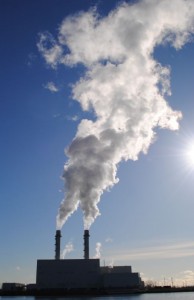International Energy Agency says current pace of clean energy development won't cut it
 Climate-change skeptics like to call environmentalists “alarmists” because of their call for urgent action to reduce greenhouse-gas emissions. The skeptics say the science is too uncertain, that there’s no rush to act, and those who argue otherwise are sanctimonious lefties out of touch with reality.
Climate-change skeptics like to call environmentalists “alarmists” because of their call for urgent action to reduce greenhouse-gas emissions. The skeptics say the science is too uncertain, that there’s no rush to act, and those who argue otherwise are sanctimonious lefties out of touch with reality.For them it’s drill baby, drill.
It’s a convenient way of dismissing bad news, which is why it’s important when traditionally conservative organizations like the International Energy Agency weigh in on the issue with their own call for accelerated action.
This week, the Paris-based agency with an oil-soaked history said the world, if it has any hope of keeping the average rise in global temperatures to below 2 degrees C, needs to double its rate of spending on clean-energy infrastructure between now and 2020.
It goes on to say that if controlling carbon emissions is truly a priority, the world needs to spend $36 trillion (U.S.) between now and 2050 on low-carbon technologies, on top of the $100 trillion or so needed under a business-as-usual scenario.
“This is the equivalent of $130 per person every year,” said the agency, pointing out that the spending should be considered an investment rather than an expense. “Every additional dollar invested can generate three dollars in future fuel savings by 2050.”
The clean energy technologies we require already exist, the agency’s executive director, Maria van der Hoeven, pointed out. Offshore wind power, concentrated solar power and carbon capture and storage were cited by the agency as the technologies with the most potential but the least traction.
“It’s there and we’re not using it,” she lamented, at the same time urging governments to wake up to the “dangers” of complacency. “The evidence of climate change, if anything, has gotten stronger. At the same time, it has fallen further down the political agenda.”
The fact investment is nowhere near what’s needed is reason for concern, she added. On our current investment path, global carbon dioxide emissions are likely to nearly double by 2050.
“Are we on track to reach out 2-degree goal? No, we aren’t,” she said bluntly. “Our ongoing failure to realize the full potential of clean energy technology and tapping energy efficiency is alarming.”
It bears emphasizing: these are not the words of Greenpeace or Al Gore or David Suzuki; these are the words of a 38-year-old international organization whose original mandate, and the reason for its creation, was to monitor and manage global oil markets in the wake of the 1973 oil crisis.
The International Energy Agency has until the past few years placed energy security and economic development well ahead of environmental protection, and it has been repeatedly accused of having a fossil-fuel bias while underestimating the potential of renewable energy.
But these days it’s singing a different tune. Fatih Birol, the agency’s chief economist, has been quite frank over the past three years about what lies ahead. Commenting on global CO2 emissions data last month, Birol said the trend is “perfectly in line” with a temperature increase of 6 degrees C by 2050. That, he added, “would have devastating consequences for the planet.”
Alarmist, granola-munching tree hugger!
Perhaps this puts into perspective why so many environmental groups and members of the general public are concerned about projects such as the Keystone XL and Northern Gateway oil pipeline projects.
The companies behind them aren’t investing billions of dollars for infrastructure that will only be needed temporarily. They expect a payback, and that means keeping the infrastructure flowing with oil at high capacity for at least the next half century. The same thinking applies to coal-fired power plants built today.
“Fossil fuels remain dominant and demand continues to grow, locking in high-carbon infrastructure,” according to the energy agency. “The investments made today will determine the energy system that is in place in 2050.”
That’s what many people are worried about, and not just environmentalists. They know that the decisions we make today will have a profound impact on the quality of life of our children and their children tomorrow.
Some, including certain federal cabinet ministers, may deem that radical. Most common sense folk would call it risk management.
You can return to the main Market News page, or press the Back button on your browser.

